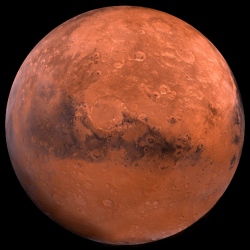
After over two years on Mars, NASA’s Curiosity rover has reached its primary objective, Mount Sharp. Located in the center of Gale Crater, where the unmanned explorer has been studying geology of the Red Planet, Mount Sharp will be the centerpiece of a new program of study to locate areas where could or once could have supported microbial life.
NASA says that Curiosity will now follow a shorter path than originally planned by heading up the slopes of the mountain rather than carrying on to the farther Murray Buttes. The agency says that this decision was due in part to a better understanding of Martian geology gathered since landing in 2012, though NASA may also be taking into account a blistering review of the Curiosity team’s science performance that suggested better focus in future.
Another reason for the change of course was to take some of the pressure off Curiosity’s aluminum wheels, which have worn more quickly than expected and have suffered from the sharps rocks on the Martian terrain, there are now holes in four of the probe’s six wheels. In response to this, the team is sending Curiosity over a milder, more sandy path.
